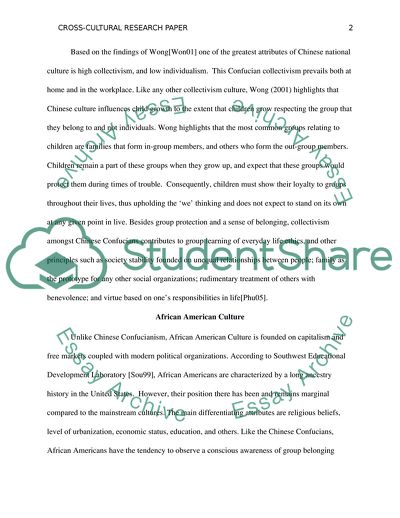Cite this document
(Cross-Cultural Similarities Between Chinese Confucian and African American Culture Term Paper Example | Topics and Well Written Essays - 3750 words, n.d.)
Cross-Cultural Similarities Between Chinese Confucian and African American Culture Term Paper Example | Topics and Well Written Essays - 3750 words. https://studentshare.org/culture/1869006-hs-culture-pysch-final-project
Cross-Cultural Similarities Between Chinese Confucian and African American Culture Term Paper Example | Topics and Well Written Essays - 3750 words. https://studentshare.org/culture/1869006-hs-culture-pysch-final-project
(Cross-Cultural Similarities Between Chinese Confucian and African American Culture Term Paper Example | Topics and Well Written Essays - 3750 Words)
Cross-Cultural Similarities Between Chinese Confucian and African American Culture Term Paper Example | Topics and Well Written Essays - 3750 Words. https://studentshare.org/culture/1869006-hs-culture-pysch-final-project.
Cross-Cultural Similarities Between Chinese Confucian and African American Culture Term Paper Example | Topics and Well Written Essays - 3750 Words. https://studentshare.org/culture/1869006-hs-culture-pysch-final-project.
“Cross-Cultural Similarities Between Chinese Confucian and African American Culture Term Paper Example | Topics and Well Written Essays - 3750 Words”. https://studentshare.org/culture/1869006-hs-culture-pysch-final-project.


